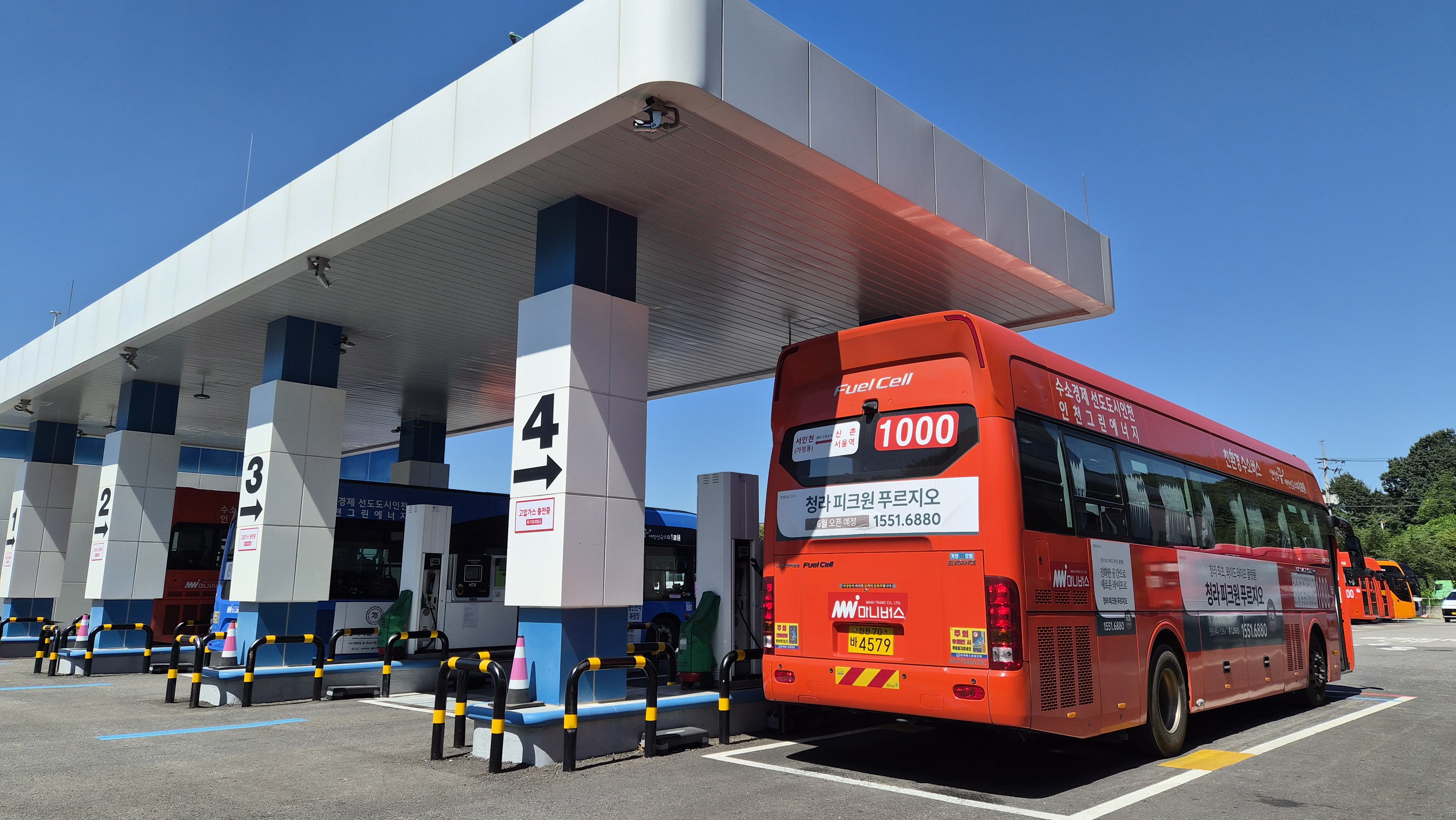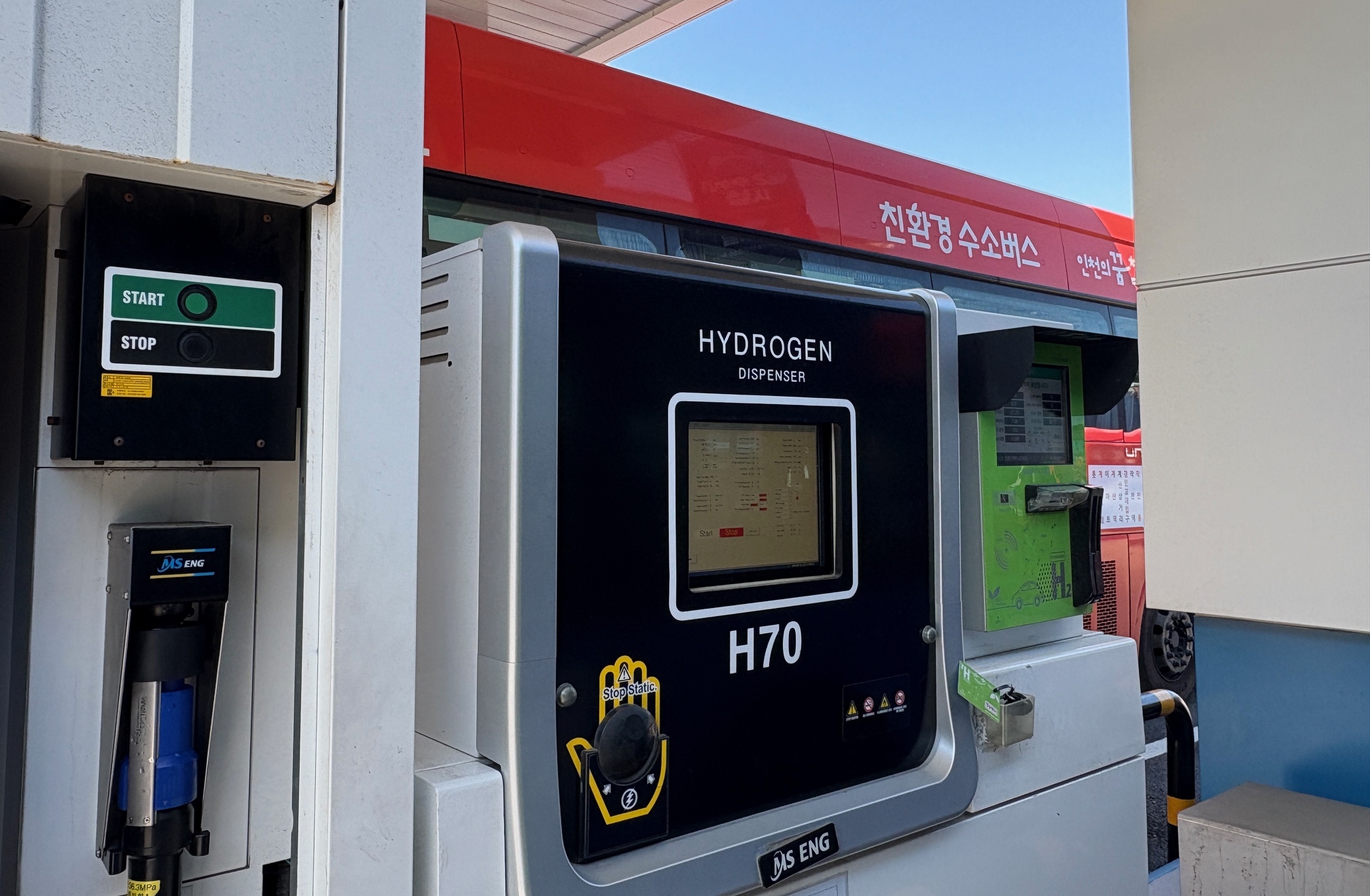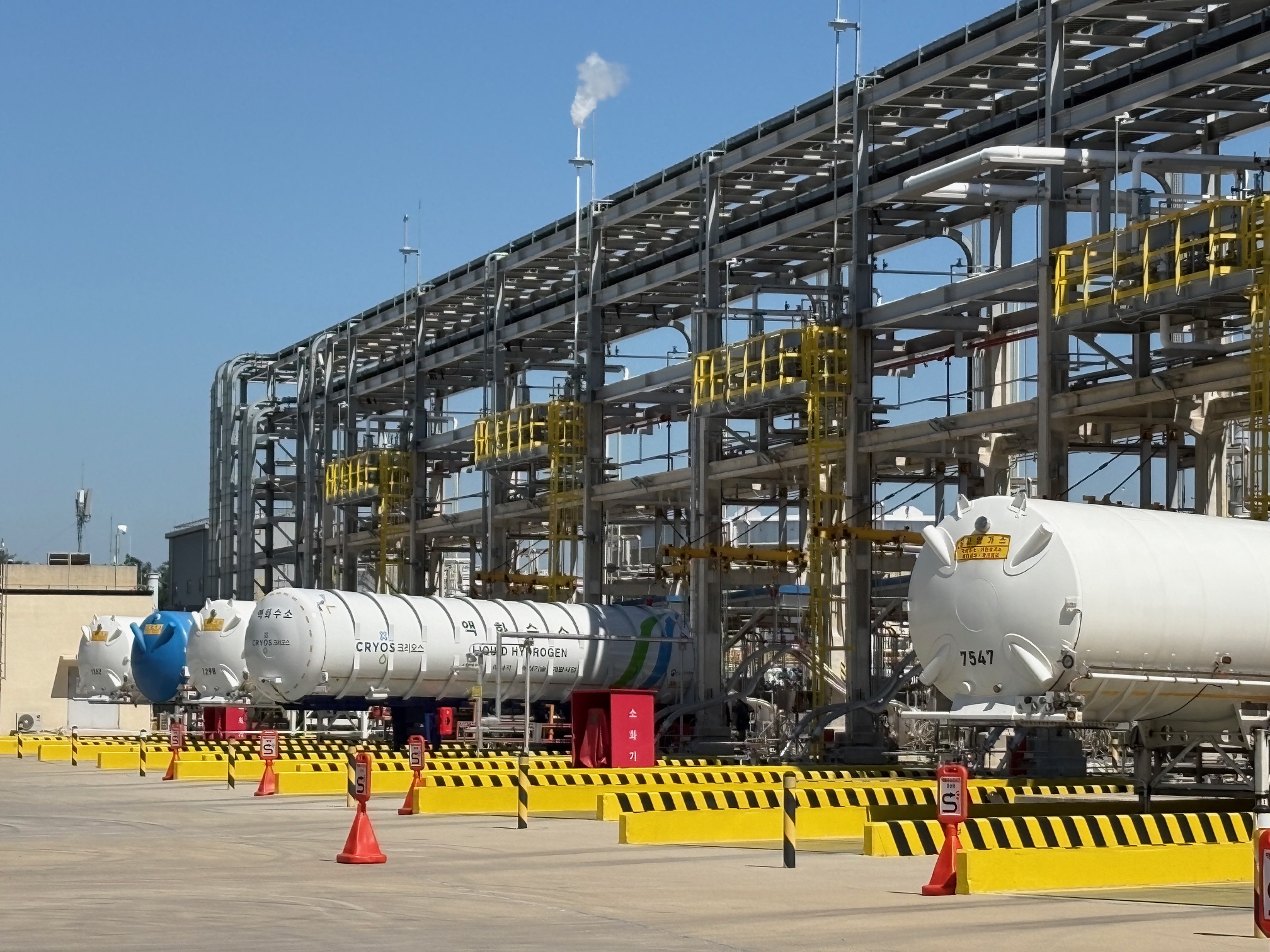Information Center
- Main page
- Information Center
- Government News
Government News
- Source
- korea.net
- Date
- 2025.10.16

A hydrogen bus on Oct. 10 is being charged at the world's largest liquid hydrogen plant in the Gyeongseo-dong neighborhood of Incheon's Seo-gu District. When the vehicle is started, it makes a quieter whirring sound and a wind-like noise while driving. (SK Innovation)
By Charles Audouin
Korea is advancing the era of "hydrogen mobility."
The government has selected hydrogen as a major source of energy to reach its goal of carbon neutrality by 2050 and Nationally Determined Contributions by 2030. In its plan announced in 2023 to implement these objectives, it raised the intended share of hydrogen among the country's energy resources from 7.6% to 8.4%.
Thus the Ministry of Climate, Energy and Environment by 2030 will supply 300,000 passenger vehicles and 21,200 buses powered by hydrogen and set up 660 charging stations. The Ministry of Land, Infrastructure and Transport will convert 25% of intercity buses with hydrogen vehicles over the same period.
Liquid hydrogen is considered essential for this objective.
Cooling gaseous hydrogen to minus 253 Celsius degrees and converting it to liquid form reduces its volume 800 times, boosting transportation efficiency more than 10-fold. This process also greatly reduces the area needed for charging stations, making it ideal for the supply of commercial vehicles such as large buses and trucks.
Just nine countries have this technology.

This is a liquid hydrogen dispenser at a charging station in the Gyeongseo-dong neighborhood of Incheon's Seo-gu District. (Charles Audouin)
The sector is seeing rapid advancement. A liquid hydrogen charging station in the Gyeongseo-dong neighborhood of Incheon's Seo-gu District attracts an average of 200 hydrogen buses daily.
Compressing liquid hydrogen under high pressure and inserting it into a vehicle's fuel tank, the charging process takes 10 minutes or less, much faster than the half hour needed at charging stations for gaseous hydrogen.
The liquid hydrogen at this station comes from the world's largest scale of its kind located in Incheon and the country's sole site for producing the fuel. Launched in May last year, the complex produces up to 90 tons per day and 30,000 tons per year, enough to run about 5,000 buses.

This is the loading area of SK E&S' liquid hydrogen plant at SK Incheon Petrochem's site in Incheon's Seo-gu District. After undergoing refining and liquefaction, the liquid hydrogen is stored in six storage tanks that each weighs 20 tons and transported in volume of up to 90 tons daily using 12 pieces of equipment. (Charles Audouin)
Through expanded government support, the Environment Ministry will aid in bus purchases and construction of charging stations while the Transport Ministry has raised the fuel subsidy for hydrogen buses from 3,600 KRW per kg to KRW 5,000.
Use of hydrogen fuel cell technology has also seen quick results. The Environment Ministry said around 2,100 of the some 40,000 hydrogen vehicles in operation as of May this year were buses, with 420 charging stations nationwide. And the Ministry of Trade and Industry said hydrogen consumption by vehicles reached 5,454 tons from January to May, up 70% year on year.
"Hydrogen buses operate mainly as large buses such as route and commuter buses," an SK Innovation source said. "One hydrogen bus reduces greenhouse gases by 72 tons and has a major effect in decreasing fine dust."
"Corporations such as Samsung, POSCO and Hyundai are cooperating with the government and the private sector to jointly develop an ecosystem for hydrogen mobility," the source added. "This pace of hydrogen mobility supply is unprecedented in the world."
caudouin@korea.kr